In their first action of the new year, Milan struggled against a tight Sampdoria side in a round of 16 Coppa Italia match, before making a couple key changes in extra time to run out 2-0 victors.
Gennaro Gattuso has led his Milan side to 31 points in the first half of the Serie A season, but this still leaves him outside the UEFA Champions League qualification spots in fifth place. With his tenure under pressure, his side traveled to Stadio Luigi Ferraris having one win, two draws and two losses in his last five games across all competitions. Sampdoria, on the other hand, came into this match with only one loss in their last seven games across all competitions, with that being a 2-1 loss at Juventus just before the winter break.
Line-ups
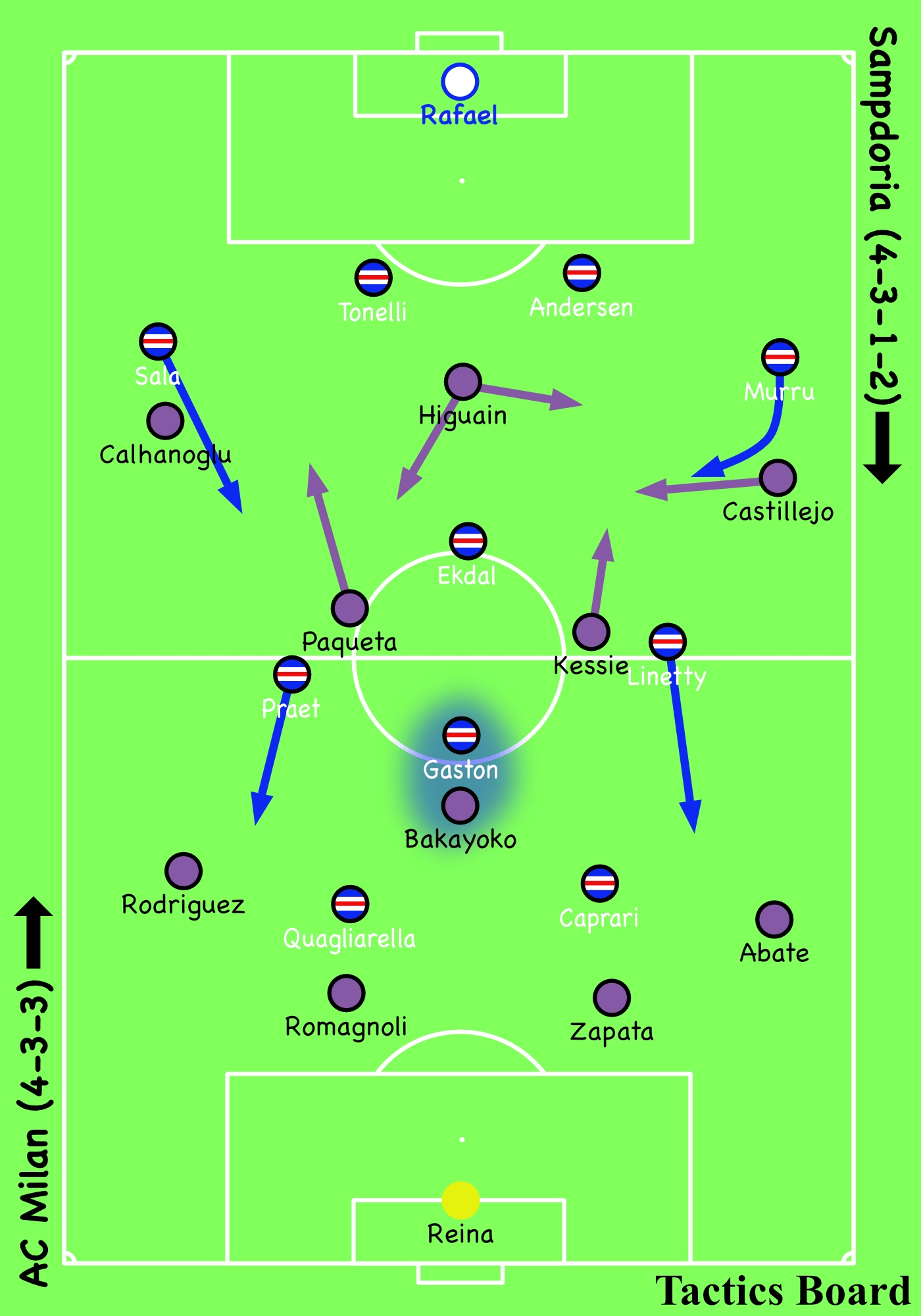
Marco Giampaolo’s side came out in a 4-3-1-2 that has become standard for them this season. He only made three changes over the side that lost narrowly to Juventus before the new year, with goalkeeper Rafael replacing Emil Audero, and a new centre-back pairing of Lorenzo Tonelli and Joachim Andersen.
Milan also made relatively few changes over their previous game, sticking with the 4-3-3 and changing the goalkeeper, with Pepe Reina coming in, as well new signing Lucas Paqueta. Paqueta slotted into a three-man midfield, with Hakan Calhanoglu moved into the forward line to replace Suso, who was suspended after picking up a red card in Milan’s 2-1 victory over SPAL.
Slow counter keeps Milan stuck
This game fell quickly into a pattern of Sampdoria controlling possession without creating many chances, and Milan struggling to get forward on the counter-attack. Milan consistently tried to build from the back, but the way their 4-3-3 lined up against Sampdoria’s 4-3-1-2 made this extremely difficult.
Giampaolo’s strikers would occupy the channels between the centre-backs and full-backs, pressing inside to restrict passing lanes. Additionally, the deepest of Milan’s midfielders, former Chelsea player Tiemoue Bakayoko, was covered effectively by Gaston Ramirez.
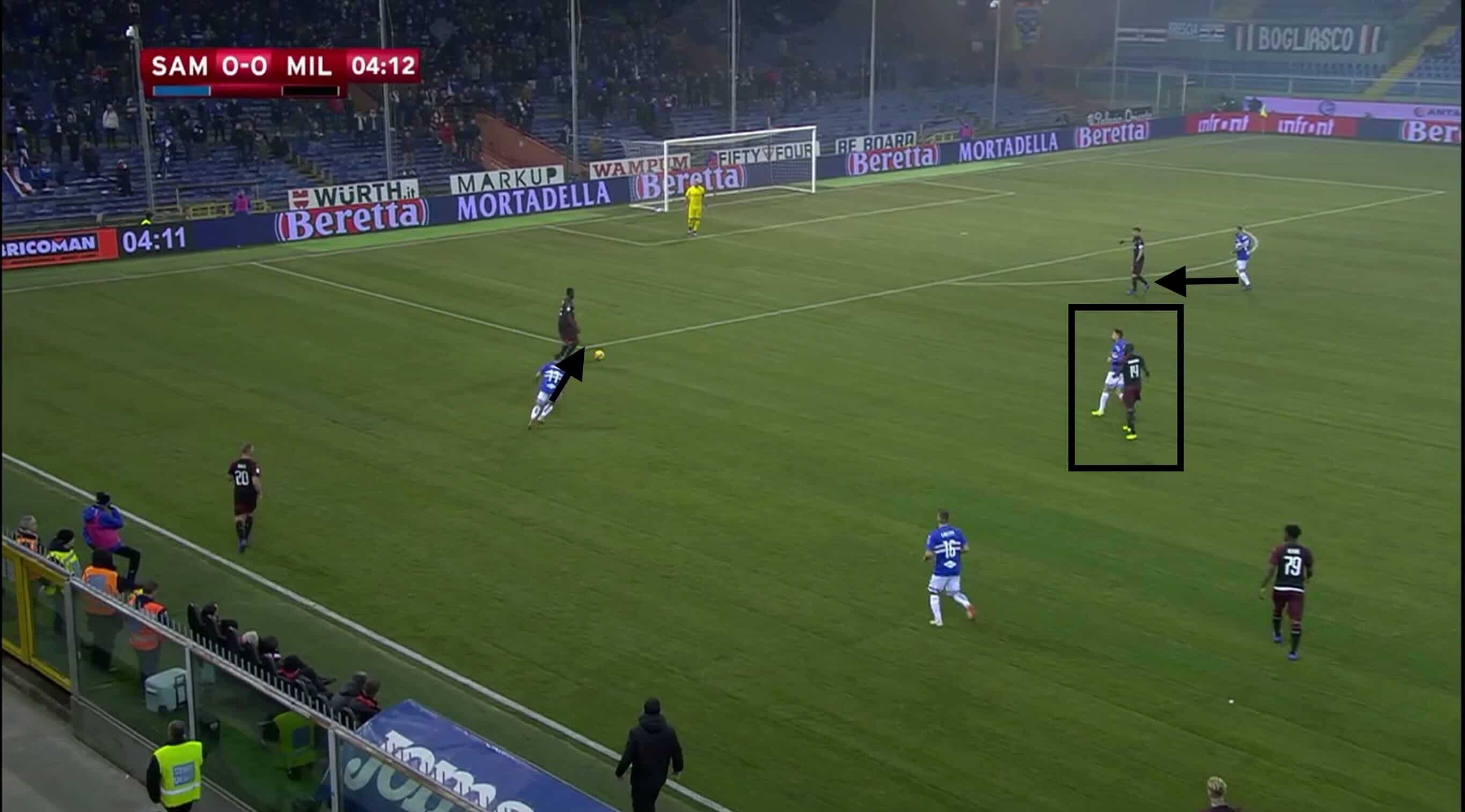
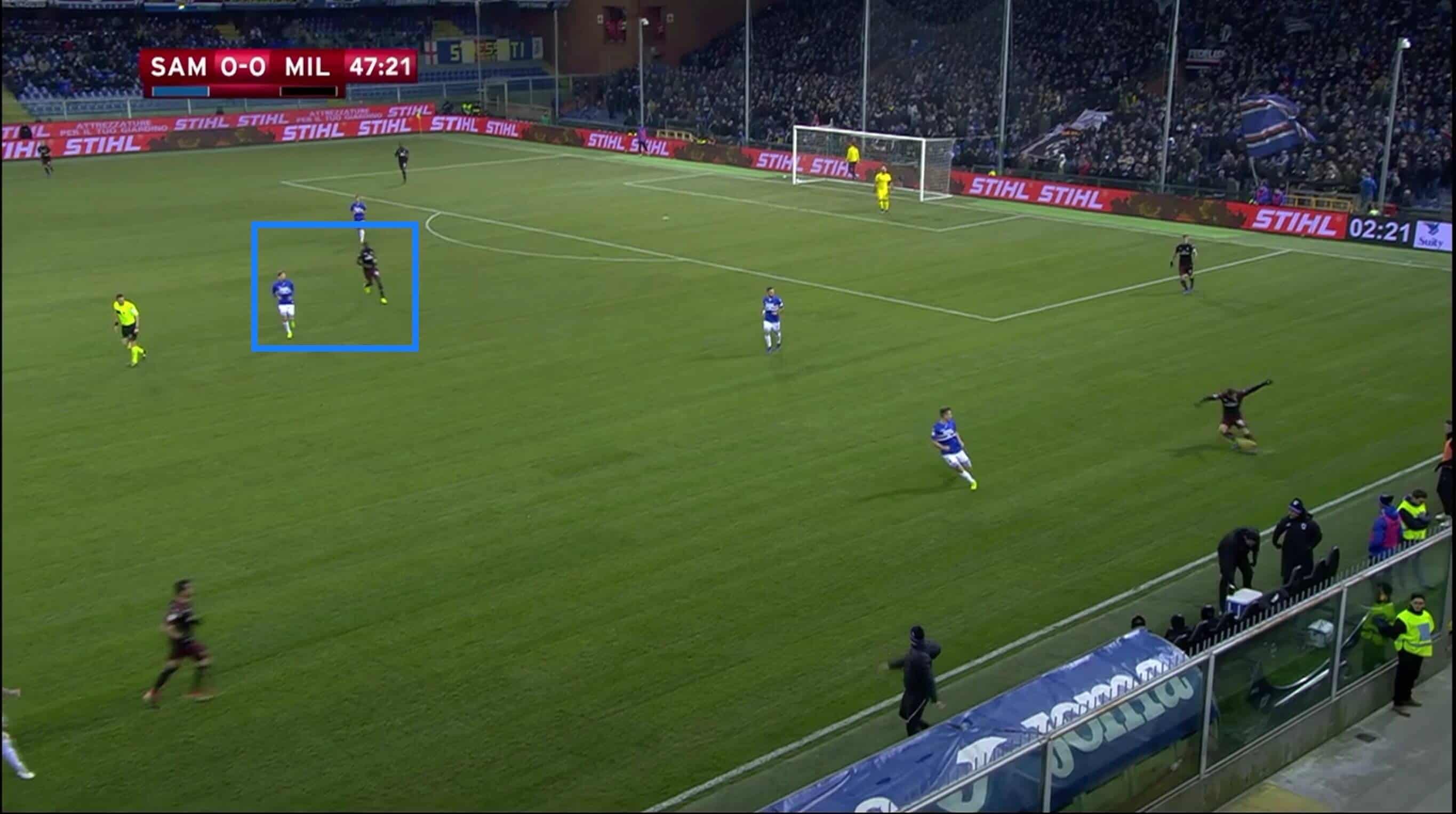
Another issue for Milan was Gonzalo Higuain’s ability to provide an outlet to relieve pressure. He found himself up against two centre-backs, with little support alongside him. Both of the wingers played very deep to help out defensively against Sampdoria’s sustained possession. Higuain doesn’t offer much speed in behind the defensive line. As a result, he was constantly operating in front of the centre-backs in an area that was also covered by Sampdoria’s deepest midfielder, Albion Ekdal.
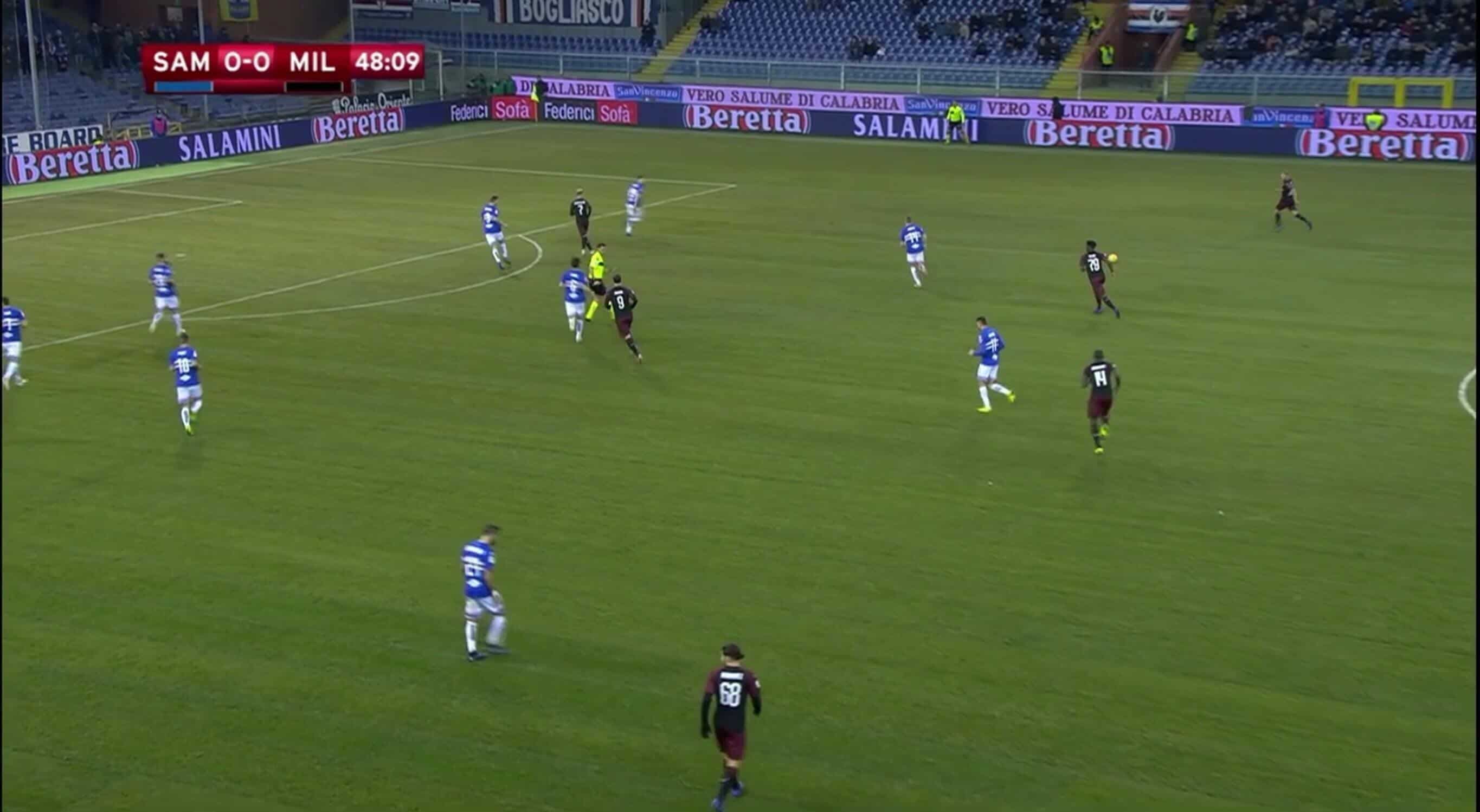
Key for each side was that the width of their attack was provided by central midfielders. When Milan were able to transition into the third phase of play, the width was often provided by the midfield runs of Lucas Paqueta and Franck Kessie.
They continually got up the pitch and operated in the half-space, looking to get behind Sampdoria’s defensive line and cut the ball back into Higuain. With two of the central midfielders providing runs into the box, both wingers looked to receive the ball on the touch line, and drift inside between the lines to link up centrally.
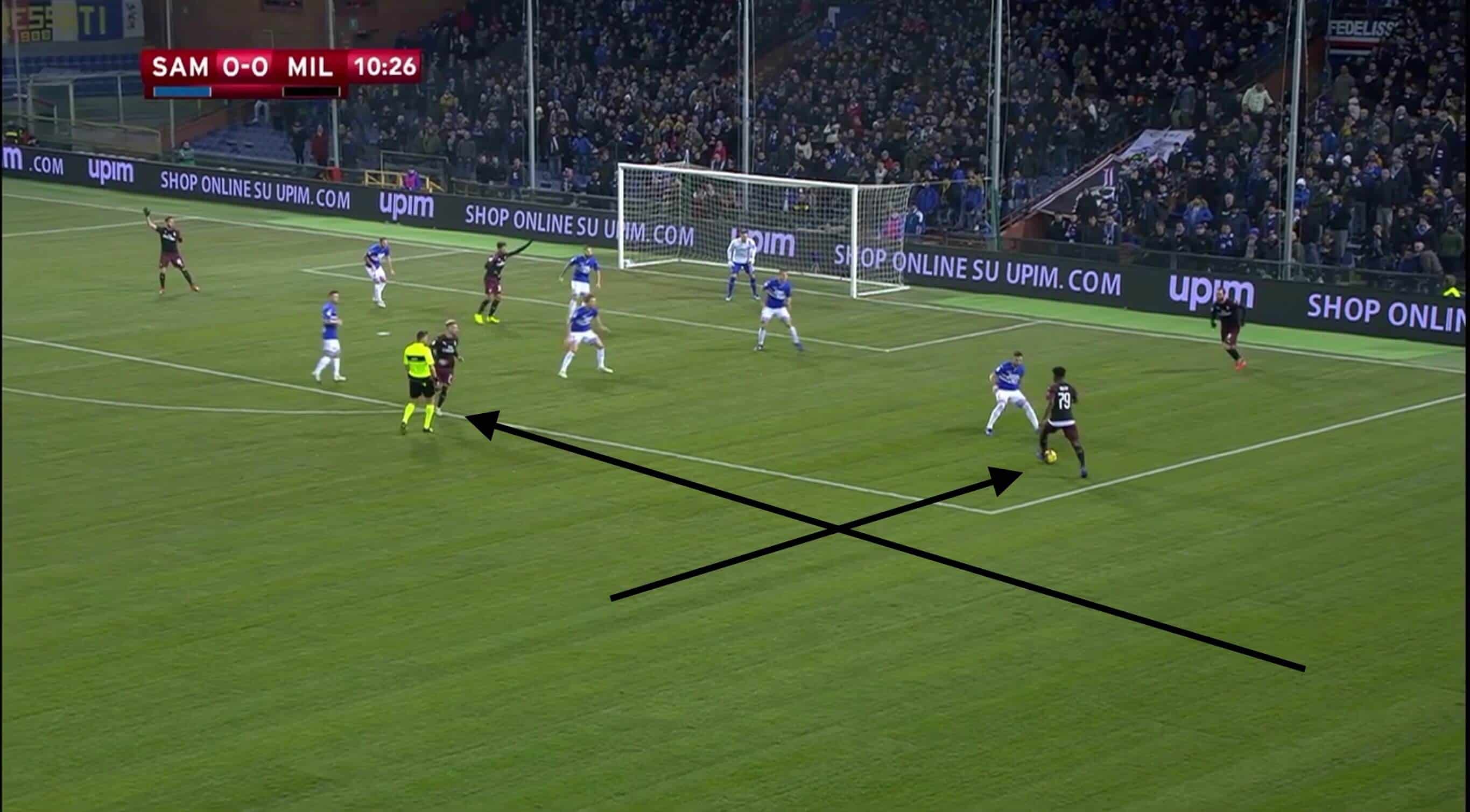
Milan struggled to get either full-back involved in the attack. This is an area where a 4-3-1-2 is vulnerable as they have space to drive into, but the Rossoneri didn’t take advantage of this space. Ignazio Abate and Ricardo Rodriguez both stayed deep and provided almost no support going forward on the attack.
For Sampdoria, Dennis Praet on the right and Karol Linnetty (replaced by Jakub Jankto in 21st minute after injury) on the left got forward into the half-space to support the attack, with the midfield reinforced by the full-backs tucking inside. The only width to Sampdoria’s attack came from these forward runs by the central midfield, but this still left all of their attacks coming through a heavily congested middle of the pitch. Even with this support going forward, Sampdoria struggled to convert their large amounts of possession into clear-cut chances.
More width, more pace
With no goals through the first 90 minutes, this game went to extra time, and both teams made changes that resulted in more chances. Sampdoria’s midfield started staying more centrally, allowing their full-backs to get up the pitch and provide more width in the final third. Pepe Reina was required to make three excellent saves in extra time to maintain Milan’s clean sheet.
Gattuso replaced Ignazio Abate with Andrea Conti, who offered quite a bit more in the attacking third than the 32-year-old Italian. The biggest change though was bringing Patrick Cutrone on for Samu Castillejo. With this change, Milan switched to a 4-4-2 with Cutrone and Higuain playing together up front.
While Higuain continued trying to find space between the lines and in front of the centre-backs, Milan now had the pace to offer a threat in behind with Cutrone. Within 20 minutes of him entering the game, he had scored two goals by getting behind Sampdoria’s defence.
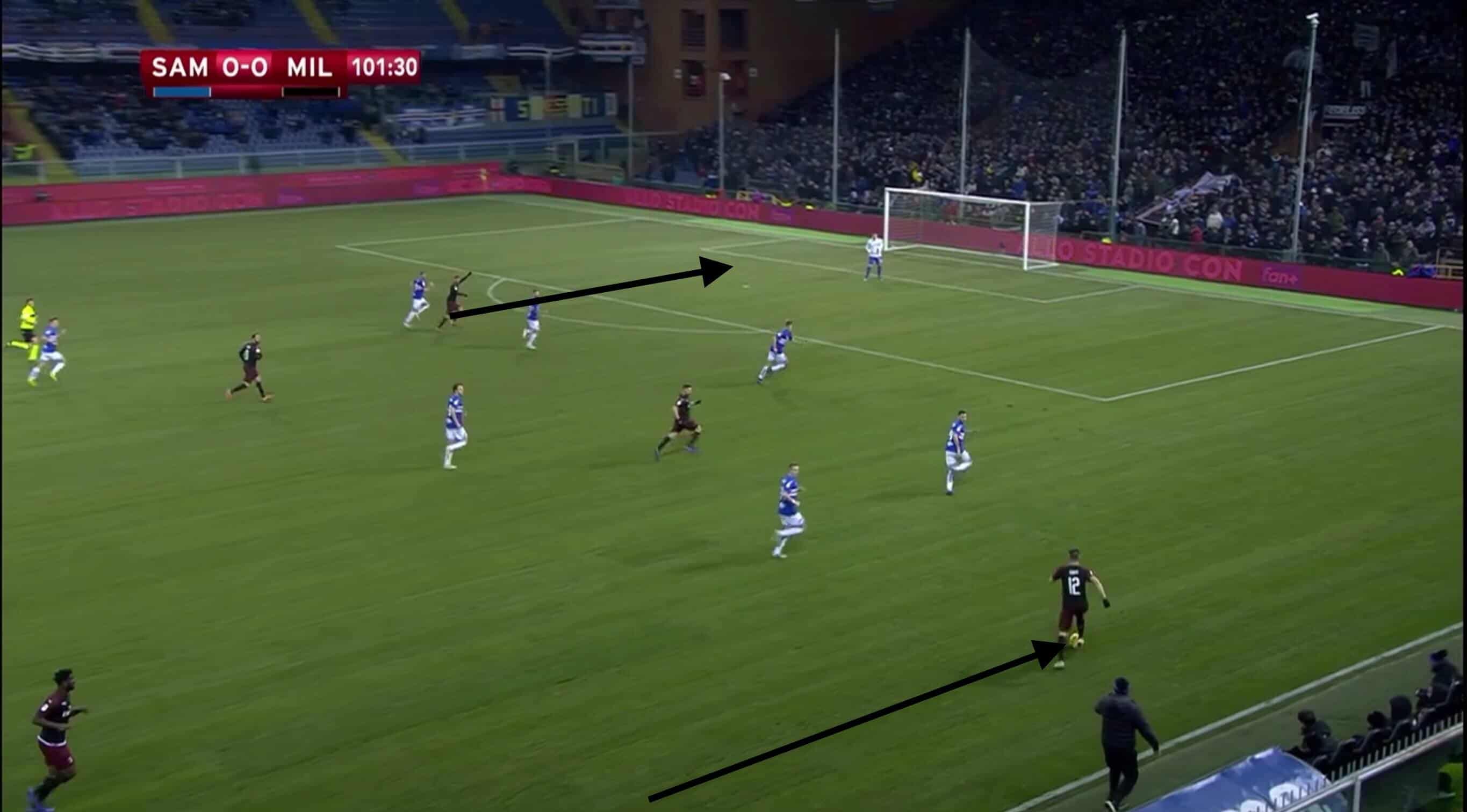
Conclusion
Milan started this game poorly, but Sampdoria weren’t able to convert all their possession into chances and goals. Giampaolo’s side attacked almost entirely through the middle, and they struggled to get through a thick defensive line from Milan. With a lack of width to their attack, they had a hard time upsetting the opposition’s defensive structure.
Milan had their own problems, without the pace to counter attack. Once Milan made the changes in extra time to provide more pace to the front line, as well as getting their full-backs forward to assist the attack, the match was only going to end one way. With this victory, Milan advance to the quarter-finals of the Coppa Italia, but this performance will do little to ease the pressure on Gattuso.
If you love tactical analysis, then you’ll love the digital magazines from totalfootballanalysis.com – a guaranteed 100+ pages of pure tactical analysis covering topics from the Premier League, Serie A, La Liga, Bundesliga and many, many more. Pre-order your copy of the January issue for just ₤4.99 here, or even better sign up for a ₤50 annual membership (12 monthly issues plus the annual review) right here.

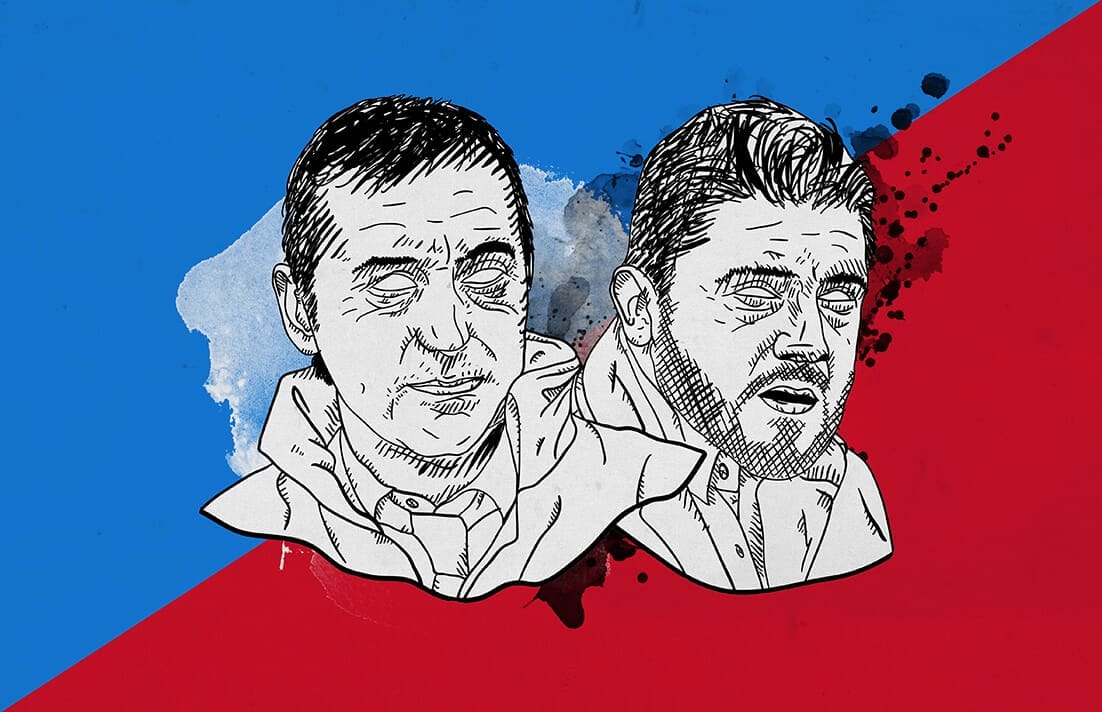


Comments